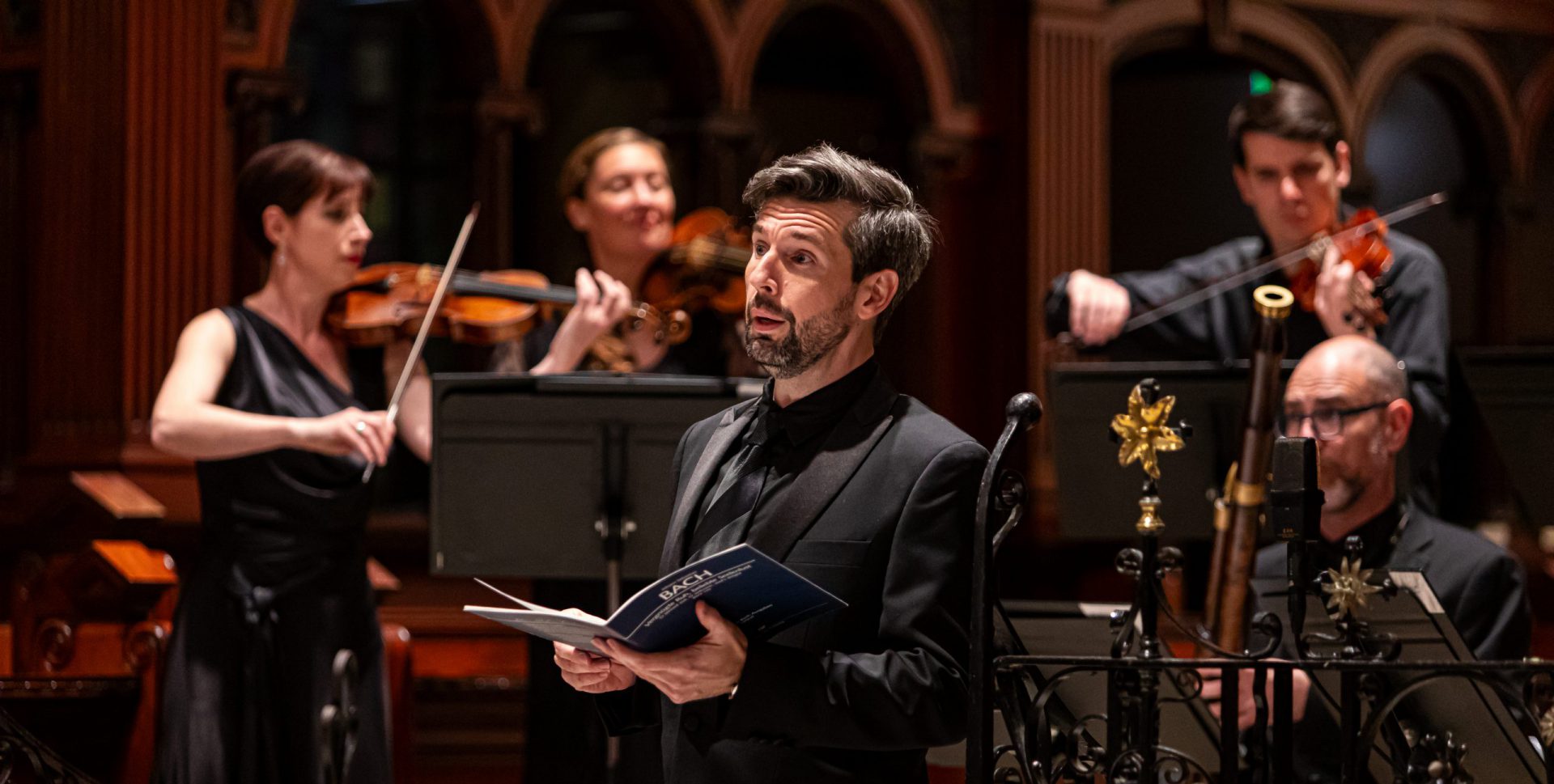It is well known that a young and vigorous Johann Sebastian Bach travelled some 400 kilometres by foot to Lübeck, to meet the legendary North German organist Dieterich Buxtehude.
What is less well known is that Bach had earlier walked some 300 kilometres to study at Lüneberg, when he was 15. Here is a precocious student dedicated to the family craft and to the wisdom of the past.
What emerges from this program is an appreciation of how Bach drew on old forms but made them his own. Take, for example, JC Bach’s Chorale zum praeludiam ‘Ein feste Burg ist unser Gott’, which was the first piece on the program. It is a piece so simple as to be almost naïve when compared with Bach’s variations on the same hymn. It was, however, a fitting entry into the soundworld of the early German baroque – grounded as it was in organ music – and to a concert which capitalised on St James’ King St’s new Dobson organ.
Pachelbel’s genius has been eclipsed by his now-ubiquitous ‘Canon in D’. But Pachelbel’s Musicalische Ergötzung Suite in C major showed his creative variety. It was, quite literally, a musical delight, recalling earlier quaint titles like “Fiori musicali” and “Tafelmusik”. Much of it was a joyful dialogue between Madeleine Easton and Simone Slattery, as they skipped between loud and soft and between shifting metres. The ground of the Ciacona – the same as the Goldberg variations – was performed clearly by Anita Gluyas on cello.
Marko Sever then performed Pachelbel’s Chaconne in F minor for organ. One gets the impression that Pachelbel loved a good repeating bass. The harmonic progression of this chaconne was one that anticipated many French composers, including Charpentier. It is grounded on a falling fourth, but lays the groundwork for the melody to unfurl dramatically upwards. Sever’s chosen registration was tasteful and at times gave the impression of an echo.
With Nicholas Bruhns’ ‘Der Herr hat seinen Stuhl im Himmel bereitet’ we have a taste of the Abendmusiken concerts that Bach doubtless attended during his stay in Lübeck. Pieces belonging to that tradition show Lutheranism’s quietist streak; they are dark and mystical, and often speak of an intimate relation between man and God. Andrew O’Connor’s mellifluous bass voice paid homage to that traditional very well, along with the rich strings, including Easton’s improvised flourishes.
An exploration of the North German organ tradition would not be complete without a complex chorale prelude. Bohm’s chorale prelude on ‘Christ lag in Todesbanden’ elegantly develops this famous hymn seriatim, verse by verse. The prelude begins, imposingly, with the hymn on the pedals, and we are treated to winding countersubjects and shifting metres. It all ends with a devastating minor chord.
And then we have Bach’s response – the so-called ‘St Anne’ prelude and fugue in E flat major. The prelude, with all its imposing majesty, was a great way to show off the Dobson organ. Despite the heaviness of the fugue, which is replete with all the trinitarian symbolism one would expect of Bach, Sever’s articulation was crisp.
After the interval came Buxtehude’s Toccata in F major BuxWV 156. It was a strange choice, not being as glamorous as, say, his Prelude in G Minor, BuxWV 163. But it showed the sort of episodic fantasia-style for which Buxtehude was famous and because of which Bach travelled some hundred kilometres.
All this was rounded off, in true Bach Akademie style, by a Bach cantata – Vergnugte Ruh, beliebte Seelenlust (BWV 170). It is a contemplative cantata, as is shown by the fact that it has only one singer, an alto. Hence the opening aria, which is in a pastoral lullaby rhythm to evoke something of “Ruh”. The second aria speaks of tension between believers and sinners. So we have Sever accompanying on organ with voices that vie against one another (in a way that recalls the closing duet of BWV 66, and even Von den stricken meine Sunden). This is no mean feat for alto voice. But Russell Harcourt’s voice never wavered, and he emphasised key phrases with force only when he needed to.
